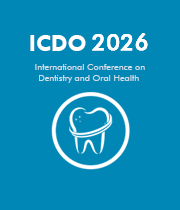Dental Pulp Capping
Dental pulp capping is a pivotal procedure within conservative dentistry, designed to preserve the health of the dental pulp and forestall the progression of pulp-related issues. This technique involves the direct application of a medicament onto exposed or nearly exposed pulp tissue, typically post-carious lesion removal. The primary goal is to instigate dentin formation and promote pulp healing, establishing a protective barrier against bacterial intrusion. Direct pulp capping is employed for small exposures, while indirect pulp capping is chosen when the pulp is in close proximity but not directly exposed. Traditional materials like calcium hydroxide have been mainstays due to their antimicrobial properties and ability to induce dentin bridge formation. However, recent innovations, including the use of mineral trioxide aggregate (MTA), showcase advanced sealing capabilities and heightened biocompatibility. Dental pulp capping exemplifies a conservative strategy to uphold pulp vitality, and ongoing research is dedicated to refining techniques and exploring novel materials to augment success rates and enhance overall patient outcomes.

David Geoffrey Gillam
Queen Mary University of London, United Kingdom
Christopher Turner
Spacemark Dental, United Kingdom




Title : Evaluating hygienist follow up for head and neck oncology patients in secondary care: Results from a two cycle audit
Peter Basta, Newcastle Dental Hospital, United Kingdom
Title : Atypical facial pain unravelled
Christopher Turner, Spacemark Dental, United Kingdom
Title : New treatment of temporomandibular disorder through muscle balance and muscle regeneration by activation of quiescent muscle stem cells( satellite cells) with mitochondrial dynamics
Ki Ji Lee, National Reserach Foundation & Busan Medical University, Korea, Republic of
Title : MRONJ and ORN: Referral or management in primary care? Navigating guidelines in the context of long waiting lists
Alisha Sagar, NHS England, United Kingdom
Title : Managing the unexpected: An Insight into supernumerary teeth
Bahar Gharooni Dowrani, Guy's and St Thomas' NHS Foundation Trust, United Kingdom
Title : Laxative prescribing for post operative head and neck cancer patients at Derriford Hospital
Pui Sze Kylie Li, Cardiff and Vale University Health Board, United Kingdom